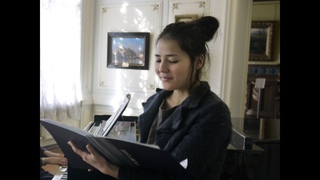A history of the Doomsday Clock in 4 minutes
“It seemed the right time on the page ... it suited my eye.” That’s how Martyl Langsorf responded when asked why the hands of the Doomsday Clock were placed at seven minutes to midnight back in 1947. Martyl, an artist married to a Manhattan Project engineer, was hired to design the Bulletin’s first magazine cover, which needed to convey scientists’ increasing concern about the management of nuclear weapons. Ultimately, she settled on a clock ticking toward midnight, intended as a metaphor for humanity’s proximity to nuclear apocalypse.
It would later become one of the world’s most recognizable symbols, observed closely by policymakers, scientists, and artists alike.
It’s fitting that in a male-dominated nuclear industry filled with the 20th century’s greatest minds, a female artist created the symbol that would elegantly communicate their concerns clearly to the public. Over its more than 75-year history, the clock continues to inspire films, books, musicians, and beyond.
In all, the c






![[4k60] 2025 New Release | LISE CHARMEL lingerie in SLOW MOTION part.1 | Salon International Lingerie](https://sun9-2.userapi.com/eGnSzlhNxqKUh-qLzTL9Ws_zlOYq710eJLZNPg/8SaSGATjv7g.jpg)
















